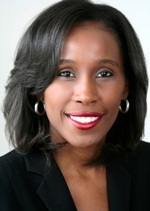How to Communicate with Patients of All Generations

Tips for nurses to improve communication with patients, young and old
By Megan Murdock Krischke, contributor
As nurses know, there is both an art and a science to nursing. Communicating effectively with patients, especially as adult patients can span five generations, is part of the art. Although communication is a “softer” skill in nursing, it is absolutely critical to providing effective patient care.
“Remember that communication is only as good as what is processed by the receiver,” began Dana Brownlee, corporate trainer and founder of Professionalism Matters. “Communication is often significantly impacted by the mode (how you communicate it) and the message (the actual words/content). These should each be customized to different generations, and even different individuals, for optimal effectiveness. Everyone is unique, but there are generational preferences--keep these in mind to minimize miscommunications.”
Jill Arzouman, DNP, RN, ACNS, BC, CMSRN, president, Academy of Medical-Surgical Nurses, has worked with patients ages 20 - 99 in her role as a surgical oncology nurse.
“The key differences that have stood out to me as I work across generations is that young adults want facts, statistics and a plan. Middle-age patients want the same information but with more detail. Older adults want that information and perhaps additional information on choices along with projected quality of life,” she explained.
To improve communication with patients, Brownlee offers nurses the following lists as a way to take generational preferences into account
Gen Xers (born 1965-1980)* and Millennials (born 1981-1997, or mid 2000s)*:
• May be more prone to be multitasking when you are giving patient instructions, so you may need to ask for their full attention when providing critical information and provide it in multiple formats - e.g. tell them face to face, then email a link with discharge instructions.
• May be more likely to have diagnosed themselves or at least done research online, so be prepared to address their questions, etc.
º It can be helpful to develop talking points around the dangers of using Google as a substitute for a medical evaluation.
• Typically prefer social media, smartphone apps or similar communication, so consider blogs, Facebook pages and YouTube videos for tutorials for this group.
º Consider asking them to set up alerts to remind them to take medication regularly, for example.
• May not respond to dated references/analogies that were before their time
• May not take their health issues as seriously because they feel they're invincible
º Remember that many younger people have not attended a funeral or experienced a hospital stay
Baby Boomers (born 1946-1964)* and older (Silent Generation,1928-1945; Greatest Generation,1900-1928)*:
• Could be distrustful of younger nurses and physicians, so be prepared
• Nurses should ask their preferences for getting test results, etc.
º Boomers could have a wide range of comfort levels with online medical records, and online access can be intimidating for some older patients; many in these generations are used to getting their results by phone or mail.
• Ask for preferences for submitting prescriptions (e.g. written, called in, etc.)
• Consider walking older patients, or a family member, through the online process or provide them a more traditional alternative if that's feasible.
• Older patients may need to rely on an advocate to assist them with writing down key information and ensuring they follow instructions as needed.
º Help them to identify an advocate if one isn’t already present.
• May need assistance navigating insurance or other administrative issues
Across the generations, and especially with older patients, you may need to repeat information or ask patients to repeat it back to ensure they've received it correctly. The teach-back method is a standard communication tool in patient education.

Dana Brownlee says not to be afraid to ask patients to put down their mobile devices and give you their full attention.
“Don’t make assumptions about your patients, but ask questions. Some older adults are very tech savvy,” said Arzouman. “In the same way, I wouldn’t want a nurse to assume that texting is the best way to communicate with younger patients. A nurse should approach each interaction as unique and determine the best modality based upon patient needs and be flexible in order to meet those needs.”
“Also, keep in mind,” she continued, “that the physician typically offers the ‘snapshot,’ while the nurse provides the ‘video.’ Most patients do not hear half of what is said to them in the clinic or hospital. We explain and then do it again and again. Nurses need to be present when the provider is with the patient. Many times we have had to re-explain and reinforce what the physician has put forth as the plan.”
“On a final note,” added Brownlee, “at the end of a conversation ask, ‘What questions do you have?’ instead of ‘Do you have any questions?’ to try to really get questions and see where communication may have failed.”
What generation gap? Travel nursing is for all ages and nursing specialties. Find nursing jobs that fit your requirements, or contact us today to learn more.
*Date sources: The Pew Research Center, The White House
Related articles:
Four Ways to Assess Health Literacy and Improve Understanding
Three Ways to Be a Better Nurse
© 2016. AMN Healthcare, Inc. All Rights Reserved.